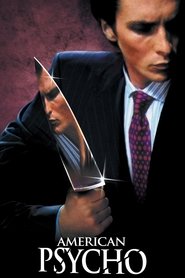It's important to keep in mind that, released in the year 2000 from a book published in 1991, American Pscho is is chiefly a period film about the 1980s.
[A]s a novel, American Psycho is quite experimental. It’s very slippery. It shifts unexpectedly from first person to third person. It’ll go from something very realistic into a sort of dreamscape or something very hallucinatory. And I wanted to keep that, but there was no way to keep the shift of perspective from first person to third person. We went for bookending it with a certain amount of narration, to say that this is his story. This is from his perspective.
— Director Mary Harron (London Review of Books blog
Since Brando, audiences have been trained to regard naturalism is not merely the default acting style, but also the only valid acting style. Christian Bale in this movie is part of a small pantheon of performances […] that swim bravely against this tide.
[The business card] scene distills the paradox of white manhood with which US media and culture were increasingly preoccupied in the decade leading up to American Psycho’s production. As the members of America’s supposedly default gender, race, and sexuality, heterosexual white men were simultaneously terrified of and obsessed with being average.[…]
American Psycho was directed by a woman and its source material penned by gay novelist Bret Easton Ellis, while American Beauty’s screenwriter, Alan Ball, is also gay. This only speaks to the pervasiveness of the myth that white men are the stars of the American narrative; even as the films are at times critical of their leads, they cannot picture a world where Americanness is embodied in any other way.
— Chelsea Davis (LA Revew of Books)
Bateman’s morning was meant to encapsulate the emptiness of his hypertrophied yuppie existence, [yet] separated from its satirical context, it might as well be an artful contribution to the grind-set genre. All that’s missing is a promo for Bateman’s life-coaching program and links for where to buy his preferred creams and supplements. Has Patrick Bateman been given a sympathetic rebrand, or did culture just sink down to meet him where he always was?
— Alison Willmore (Vulture)

